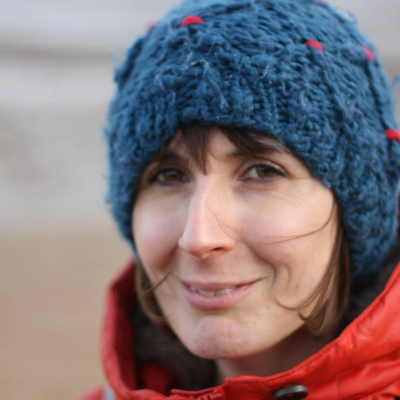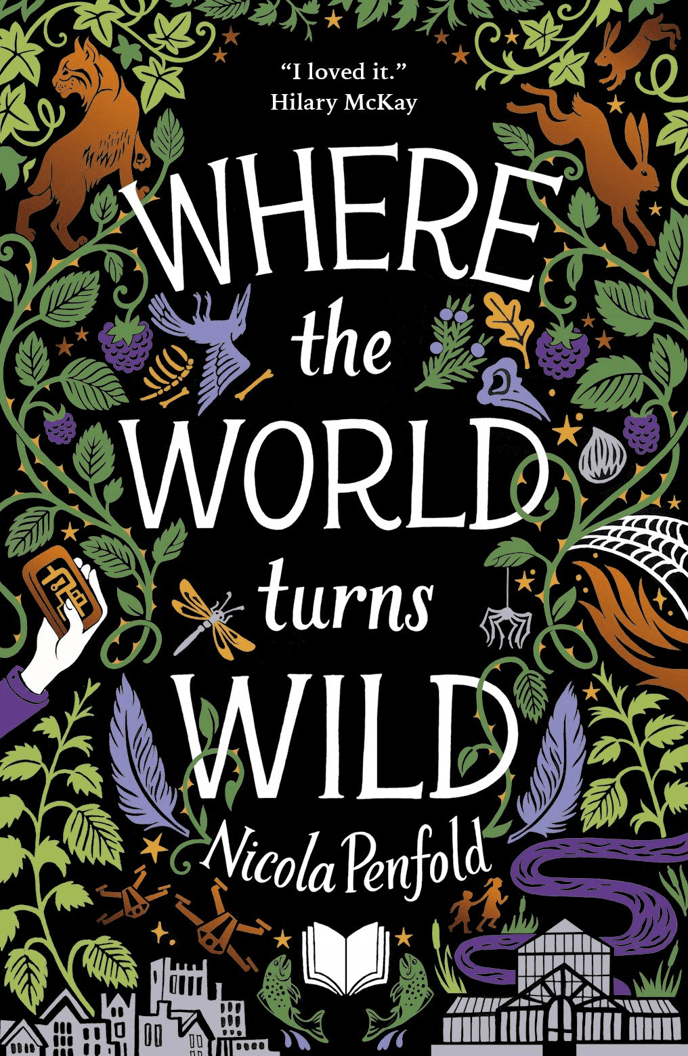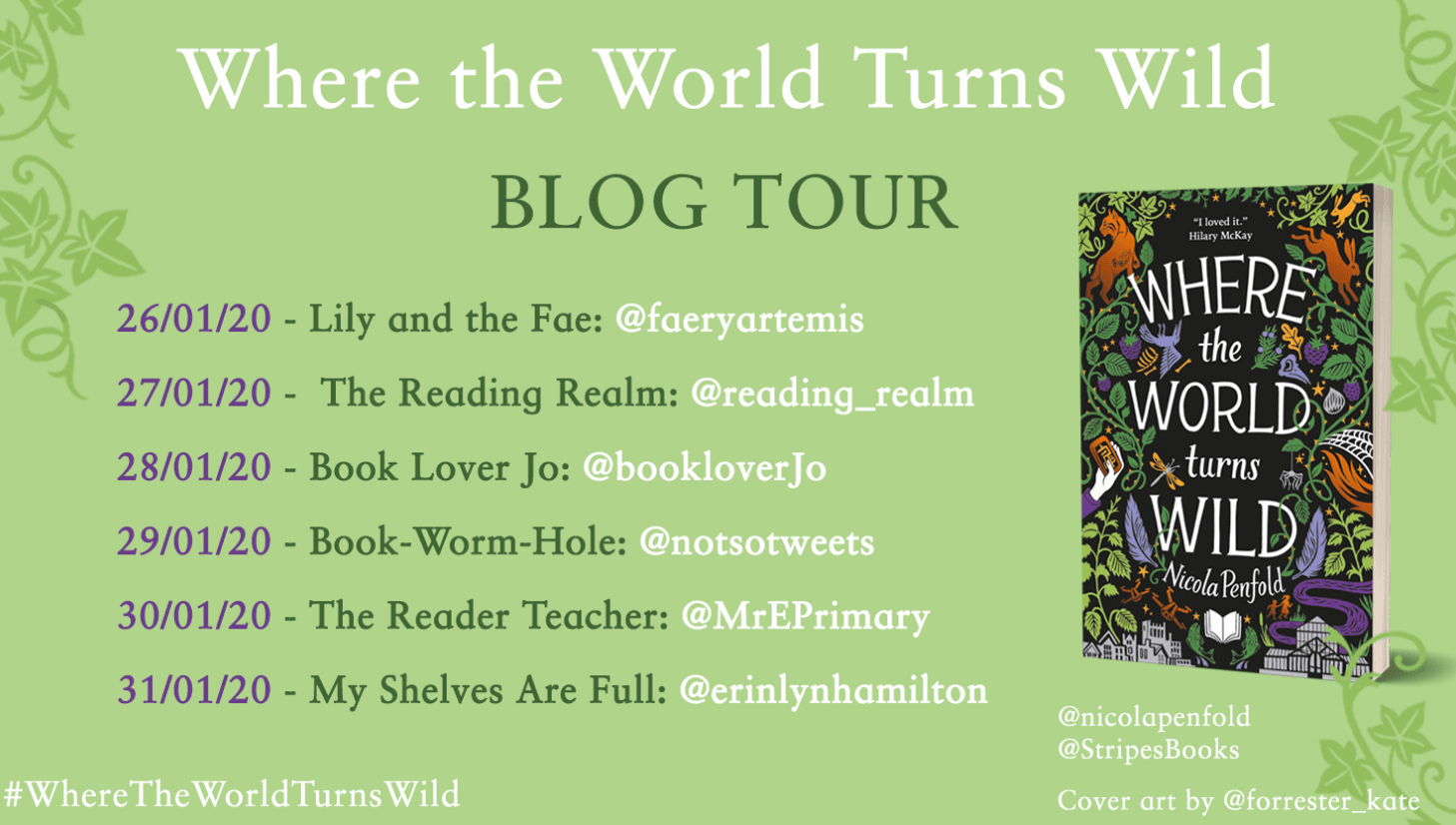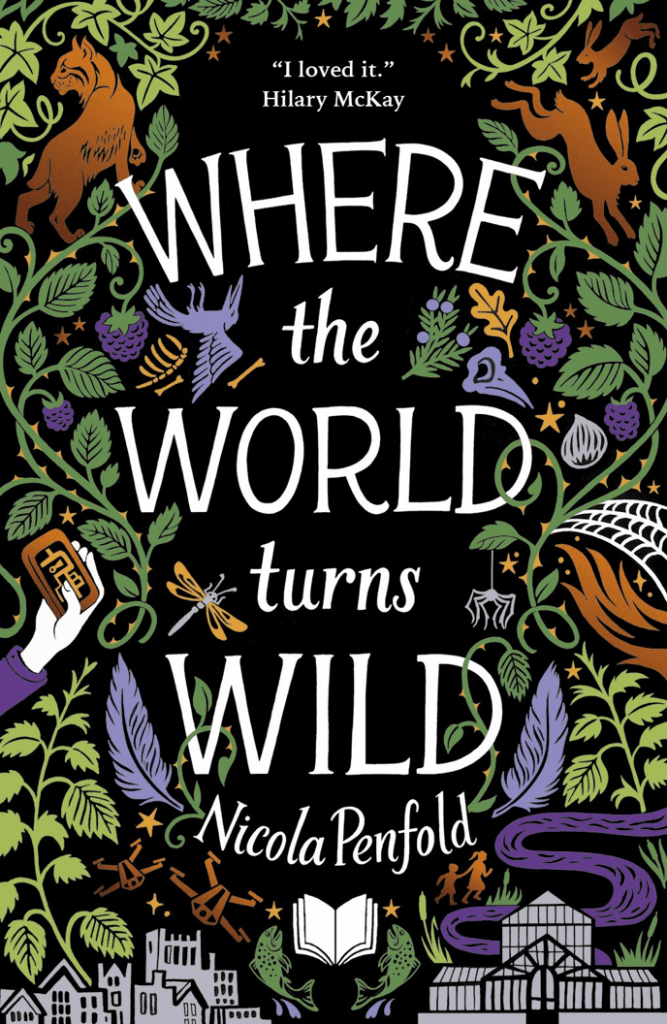We are thrilled to be part of the #WhereTheWorldTurnsWild Blog Tour! Today, author Nicola Penfold journeys into The Reading Realm to talk about the thrilling and beautifully written Where The World Turns Wild…

Without any spoilers, could you tell us a little bit about Where the World Turns Wild and the inspiration behind the book?
Where the World Turns Wild is set in an imagined future where, because of a deadly man-made disease, people live in cities, where no animals or trees, and barely any plants, are allowed. Outside the cities, the natural world has grown back in abundance. It’s rewilded itself and is a huge, untamed wilderness. My main character, Juniper, 13, and her brother, Bear, 6, were born in the wild and have immunity to the disease. When they discover they’re part of a merciless plan by city authorities to exploit the natural world, Juniper knows they need to escape back into the wild. It’s a journey and a survival story.
I was hearing a lot about how our lives today are less connected with nature than our parents’ and grandparents’ generation were, and I wanted to explore this. What it means to have nature in our lives. What a society might look like without it.

Can you remember the first book that made an impact on you? Who were your childhood storytelling heroes?
I was a massive Enid Blyton fan, especially the Famous Five books, and the Adventure books, with Dinah, Lucy-Ann, Philip and Jack, and Kiki the parrot. I also loved horse books – the Silver Brumby books, Ruby Ferguson’s Jill books, Jinny books by Patrician Leitch, books by the Pullein-Thompson sisters. I suppose there’s a shared theme of adventure, being outside and animals! Other storytelling heroes included Joan Aiken, Philippa Pearce, Nina Bawden and Helen Creswell.
What are the three main things a reader will find in Where the World Turns Wild?
A city.
Trees.
A journey.
When did you start to tell stories?
I think the first part of storytelling is imaginative play and I loved to play. I’d have cushions set around my room that would be rafts on a river, and my bed would be a mountain, and endless cuddly toys as companions. I used to play like this from a very young age, and continued way beyond the age it would be considered cool!
Did you always want to be a writer? Have you had different jobs before you were an author? Do you think a variety of work experiences has helped you to write?
I have always wanted to be a writer, yes. This is my dream come true! When I was in the sixth form I had a Saturday job at Doncaster Reference library. Then after university, where I studied English, I found my way into a health charity, and worked there for many years. I think all kinds of, and indeed all, experiences can shape your writing, work related or not.
Where do you get your ideas from, and how do you store them?
I get most ideas when I’m not actively looking for them. Being outside, especially going for a a long walk, often seems to throw up ideas. I try and always carry a notebook with me. I also love train journeys! There’s something about seeing the world rushing by, and imagining other lives, places and possibilities.
Every writer creates a story in their own unique way. Roald Dahl had an armchair in his shed, Lewis Carrol liked a standing desk and to write in purple ink. Do you have any unconventional methods, habits or superstitions when it comes to writing?
I write most words on our desktop computer, in the smallest and messiest room in our house. One day I’d love to swap it for a writing shed in the garden, and a view of trees, but I’d need a bigger garden first! Before the words on the computer stage, I use a lot of notebooks. I think my best ideas come when I’m out and about.
How much of Nicola Penfold is reflected in your characters?
I think there’s quite a bit of me in Juniper, my 13 year old main character. She’s a big reader. She loves language and playing with words. She’s at her best with green things around her. My characters are also inspired by my own children, and there are elements of all of them in the book. One of my daughters loves to draw, especially faces, like Juniper. My oldest daughters can both be very protective to their younger siblings, that’s there too. My son, Freddie, in particular enjoys playing with plastic animals, lining them up for battles and adventures – that’s gone into Bear. All my kids are very fierce about protecting the natural world, and animals.
You are in a library with a 10-year-old who claims that they don’t like reading… Which three books would you reach for to try to change their mind?
Something exciting and pacey with no preamble. I’d go for The Girl Who Stole An Elephant by Nizrana Farook.
Something you just need to finish, to know what’s happened, such as High Rise Mystery by Sharna Jackson.
Something that feels like living your very best dream, like We Won an Island by Charlotte Lo.
This slideshow requires JavaScript.
What’s the best and worst things about being an author, and do you have any advice for budding writers?
The best thing is being able to share your stories with other people. Your world, your characters, your story. After all those weeks and months and years crafting and recrafting, it’s all been worth it. This could also potentially be one of the worst things. It’s exposing. What if people don’t like it?!!
My main advice would be to find like-minded writing friends. A brilliant way to do this is to join SCBWI (Society of Children’s Book Writers and Illustrators). It’s a lovely community, and as well as helping you find critique groups, they run some great value masterclasses.
What other advice or words do you have for future change makers who have climate crisis, habitat destruction and the survival of our planet at the forefront of their concerns?
I would say take regular breaks to look after yourself. Go into the woods or to the sea. Find your own wilderness and let it work its magic on you. It’s also good to stay solution focused. That’s why I love thinking about rewilding. It’s hopeful.
QUICKFIRE QUESTIONS!
- Three words that describe you: Thoughtful, imaginative, quiet.
- Favourite time of the day? Morning
- Three random facts about you:
One of my favourite pastimes is beachcombing – looking for fossils, old bits of pottery and sea glass.
It’s impossible for me to sleep at night without reading at least a few pages of a book, no matter how tired I am.
I passed my driving test aged 18, drove for a week, then went to university and never drove again!
- Go-to snack? Popcorn
- The best advice you ever got: There are variations of this, but basically it’s along the lines of you should spend twenty minutes a day in nature, unless you’re busy, and then you should spend an hour.
- Complete the sentence: “If I wasn’t an author, I’d be…” a librarian.
- Superhero power of choice: To be able to remove plastic from the ocean.
- Go-to outfit? Leggings, comfortable skirt, warm jumper, trainers.
- Your dream place to curl up with a book? On a train.
- The three books you’d like to get for your next birthday:
Viper’s Daughter by Michelle Paver
The graphic novel version of Tom’s Midnight Garden by Edith.
The sequel to The Skylarks’ War by Hilary McKay, which I really hope might be out by then.
This slideshow requires JavaScript.
Make sure follow @bookoverjo for the next stop on the #WhereTheWorldTurnsWild Blog Tour!




One Response
Great interview. I love how elements of family member’s personalities have been woven into the characters.